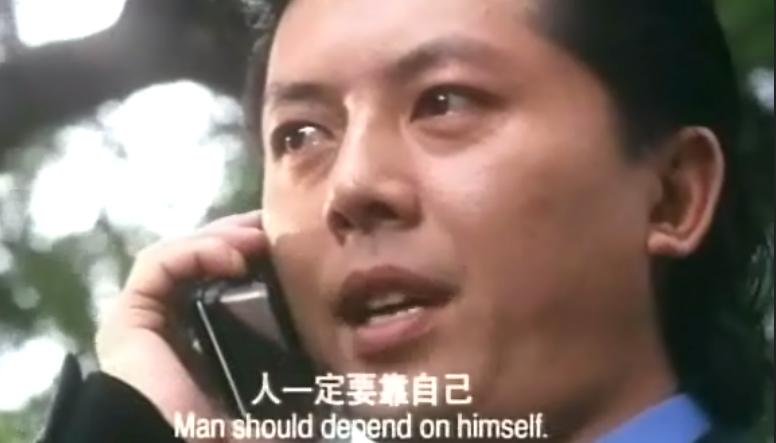我都不會斷章取義喔.....
福島一號核電廠核汙染危機深化 日本東電公開懇求國際援助!
by RT Published time: August 22, 2013 22:21
在8月19日再度發現超過300噸高濃度的輻射汙水外洩, 被國際原能會和日本政府認定是國際核能事件分級表(INES)中代表「嚴重事件」的第三級事件之後, 日本東電終於對外公開承認福島一號核電廠的輻射污染危機遠遠超出他們原先自信有能力可以自行處理的程度。
在經過18個月的獨力搶救不見成效, 福島一號輻射汙染事件反而越演越烈之際, 日本東電承認他們需要國際的協助來幫忙解決福島一號核電廠的輻射危機。日本東電副總裁 Zengo Aizawa 在週三(08/21)晚間召開的一場記者會上說:“國際上有好幾個國家對於核反應爐除役的相關事項比我們更有經驗, 所以我們希望向他們諮商並運用他們的經驗。“
”因此說來, 我們需要協助, 不僅僅是從日本政府, 更是需要國際社會ㄧ起來合作處理這個任務。“
東電的公開求援是由於本週三(19)日福島一號核電廠發現其廠區現有1060個暫時儲存輻射汙染廢水的大水槽中的一個被發現有裂縫, 導致高達300噸的高度輻射污染的廢水外洩, 因而有巨量的銫輻射元素被釋放到環境中。進一步的檢測也發現在福島一號廠區的其他區域也存在有很高濃度的輻射污染現象。
日本原子能規制委員會(NRA) 將週三的輻射汙水外洩事件列為國際核能事件分級表(INES)中代表「嚴重事件」的第三級事件, 分級表是從1到7級, 第7級代表最嚴重的事故。
NRA 委員長 Shunichi Tanaka 宣稱:“我們認為福島一號的現況是光光增加更多監測的措施已經不足以防止更多的核安事故再度發生。”
聯合國的國際原能總署(IAEA)也聲明: “對於福島現況嚴重關切, 一旦接到請求就可以隨時投入協助救災工作。”
在過去, 日本一直強烈阻止外國單位介入協助其處理311大地震和海嘯複合災害後的福島核災搶救工作, 絕大部份的核災除汙工程都是由日本當地的公司取得合約, 國外的專家們只能遠遠的觀察不得其門而入。
這次的大量高濃度輻射汙水外洩事件是福島核災搶救展開後一連串事故中的最新ㄧ件,也是截至目前為止最嚴重的一次,這整個夏天, 接二連三爆發的輻射汙染危機讓福島一號核電廠和東電一直佔據各媒體的頭條版面。
東電承認充斥在福島一號受損的幾個反應爐地基的表層水已經被輻射汙染, 這些輻射汙水最後都流到海中。即便每天都有高達三百噸的輻射汙水流入太平洋中, 東電至今還是持續矢口否認問題的存在。
財務陷入困境的日本東電目前正在試圖築起一個由化學凍土和不鏽鋼所組成的雙重防護體以防止輻射汙水繼續流入土壤及海洋中, 但是這種阻礙物不是絕對防滲的, 而且覆蓋率很有限, 並且需要持續不停的抽水以防止污水累積而溢出這個防護阻隔機制。
這些福島一號的水槽中裝有使用過的冷卻水, 他們是用來防止受損反應爐的溫度升高到危險的地步, 但是這些冷卻劑卻被外界認為不適合用在替核反應爐降溫, 因為他們原本是設計給其他的工業用途來使用的。這種冷卻劑是當初福島核災發生後被拿來應急用的, 而且用來儲存這些輻射廢水的水槽也快要滿了。東電估計目前水槽可儲水的容量已經滿到85%的地步了。雖然東電宣稱計劃建造更多永久儲存的設施, 但是至今沒有任何具體的進展。最近的這一次輻射汙水外洩已經是目前所被發現的水槽底部漏水的第五次了。
東電對於福島核災輻射汙染環境的監測和結果公布都一向十分遲緩, 該公司直到這個月才終於正式承認在臨近福島一號核電廠附近的海域監測到海水中所含的氚元素和銫元素已經達到很不安全的程度。這些輻射物質的累積將會危害海洋環境, 並且會囤積在海洋生物的體內, 最後也有可能會傷害到位在食物鏈更上層的人類。
東電副總裁 Aizawa 在週三的記者會上承認:“這些輻射汙水依舊是個足以導致危機的頭疼的問題。“
”很不幸的, 東電總是拖到事態極為嚴重了才會對外透露消息, 而且歷來東電說的任何事件, 到頭來都會比東電剛開始時所承認的還要嚴重許多!" 核災研究專家 Christina Consolo 告訴 RT記者。
大多數的專家估計需要花超過四十年到一百年的時間才能夠消弭日本福島核災所帶來的影響。
Fukushima operator pleads for international help as radiation crisis deepens!
by RT Published time: August 22, 2013 22:21
TEPCO, operator of the crippled Fukushima nuclear plant, admits it needs overseas help to contain the radioactive fallout, after 18 months of trying to control it internally. It comes after the latest leak at the facility was deemed a “serious incident.”
"Many other countries outside of Japan have experienced decommissioning reactors, so we hope we can consult them more and utilize their experience,” TEPCO’s vice president, Zengo Aizawa, said at a news conference on Wednesday night.
"In that sense, we need support, not only from the Japanese government but from the international community to do this job."
The call comes after one of the 1,060 temporary tanks used to store highly contaminated water sprang a leak on Wednesday, discharging as much as 300 tons of radioactive liquid containing large amounts of cesium. Further tests revealed excessive radiation levels elsewhere in the facility.
Japan’s Nuclear Regulation Authority (NRA) rated the incident 3 on the International Nuclear and Radiological Event Scale, which spans from 1 to 7.
"The current situation is at the point where more surveillance won't be enough to keep the accidents from happening," declared Shunichi Tanaka, chairman of the NRA.
The UN’s International Atomic Energy Agency (IAEA) has said that it is “taking this matter seriously and remains ready to provide assistance on request."
In the past, Japan has been averse to letting foreign entities help with eradicating the nuclear fallout from the Tohoku Disaster of March 2011. The vast majority of clear-up tenders were won by local companies, and outside experts have observed from afar.
The leak is the latest - and most serious - in a string of accidents that have kept the station in the headlines throughout the summer.
TEPCO admitted that groundwater that floods the damaged basements of the destroyed reactors is becoming contaminated and flowing out into the ocean. Three-hundred tons of the radioactive liquid reached the open water each day, even as TEPCO continued to deny the existence of the problem.
The financially-troubled company is attempting to construct a chemical and steel double barrier to stop this outflow, but the obstacle is not impermeable and only covers a limited area - requiring water to be pumped away to stop it from building up and bursting through.
Its tanks, which are used to keep the coolant that prevents the damaged reactors from overheating dangerously, are considered to be unsuitable because they were made for other industrial purposes. They were adapted following the emergency, but they are nearly full. TEPCO estimates that it has already reached 85 percent capacity, although plans to create a more permanent facility have so far not materialized. The latest leak was the fifth time that toxic water escaped from a basin.
TEPCO has been slow in measuring the levels of radioactive elements that have flowed out of the station, as well as publishing its data. The company finally revealed this month that highly unsafe tritium and cesium levels had been detected in the seawater near the plant. A concentration of these elements could damage the marine environment and build up in marine life, possibly endangering humans further up the food chain.
"The contaminated water remains a problem that could lead to a crisis," Aizawa conceded during the press call.
“Unfortunately, TEPCO waited until a severe emergency arose to finally report how bad things really are. Historically, everything TEPCO says always turns out to be much worse than they initially admit,” nuclear accident researcher Christina Consolo told RT.
Most experts say that it could take between four decades and a century to eliminate the impact of the Fukushima disaster.
http://rt.com/news/fukushima-internatio ... -leak-866/
Fukushima operator pleads for international help as radiation crisis deepens
rt.com
TEPCO, operator of the crippled





